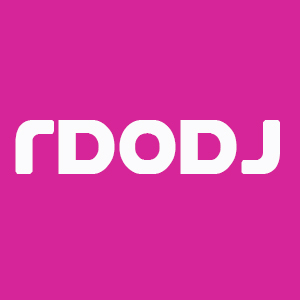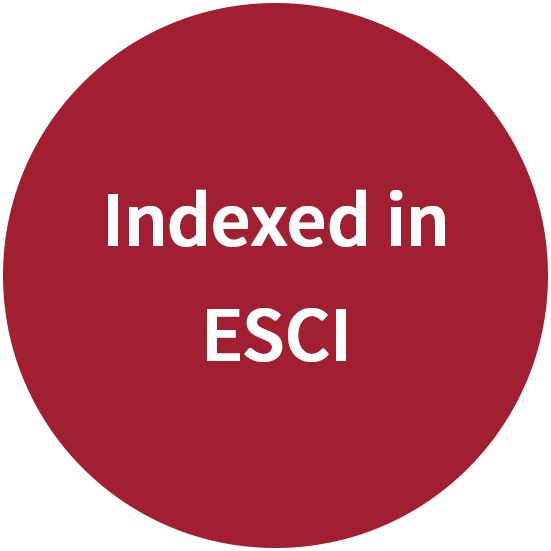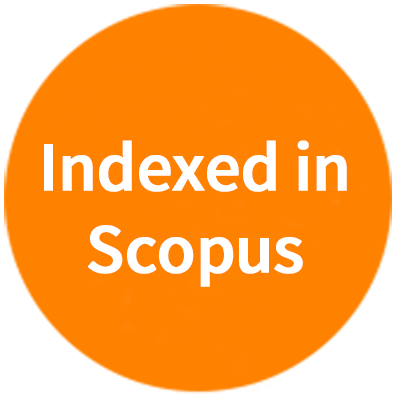A landscape map of the key global rare disease organizations
INTRODUCTION
In the last few decades, interest in the rare disease community and small population research has increased substantially, driven by a wide range of issues and different stakeholders, including people living with rare diseases, healthcare professionals, policy makers, funders, academia, industry, and others. As such, the field of rare diseases has evolved and grown and will continue to do so. Pivotal to this growth is the support of a variety of important rare disease-focused organizations that play a crucial role in advancing the research and development of new medical technologies and leading on policy issues that matter most to patients.
A LANDSCAPE MAP OF THE KEY GLOBAL RARE DISEASE ORGANIZATIONS
This Special Issue showcased six key organizations that exemplify the sophistication and ambition of the field alongside the drive to make a difference in the rare disease community. These papers provide fascinating insights into the diversity of the field (including advocacy, not-for-profit and government-led initiatives), the innovative approaches utilized, and key objectives.
The paper by Chan et al. describes the work of the International Rare Disease Research Consortium (IRDiRC), a global consortium of stakeholders that aims to tackle key issues in diagnostics, therapeutics, and patient outcomes[1]. At its center is a global platform of collaborative effort and cross-discipline exchange of ideas that can address three strategic goals through dedicated Task Forces and Working Groups.
Mimouni et al. highlight the integration of over 130 institutions from 35 countries through the European Joint Programme on Rare Diseases (EJP RD)[2]. EJP RD collaborates to optimize the use of resources, avoiding duplication and streamlining the process from basic research to clinical application. A key strategy in achieving this is fostering collaboration among stakeholders while promoting enhanced research, policy alignment, and sharing of infrastructure and knowledge.
Brooks et al. describe the approach of the (US National Institutes of Health)[3]. The paper details a wide variety of activities, including a rare disease day, information center, toolkit for patient-focused therapy development, clinical research network, and cutting-edge methodological work such as promoting the use of shared molecular etiology basket trials.
Cavaller-Bellaubi et al. describe EURORDIS-Rare Diseases Europe, an alliance of patient organizations in Europe, advocating for the needs of people with rare diseases by influencing policy, healthcare, research, and access to medicines across Europe and globally[4]. The paper describes how it empowers people living with a rare disease on different levels, such as training, fostering global collaboration, and supporting international initiatives. However, of most interest is how it influences global policy in terms of setting and executing its strategic goals, aligning with the United Nations Sustainable Development Goals and the European Action Plan for Rare Diseases.
Jain et al. show the many paradoxes of rare diseases in the Asia Pacific region[5]. Being the world’s most populated region, it brings with it the highest number of people with rare diseases, but also a mix of cultures, languages, healthcare systems, populations, and economic backgrounds. They describe how APARDO (Asia Pacific Alliance of Rare Disease Organizations) aims, in this environment, to foster connectivity and work toward a more equitable world for people with rare diseases.
The organization Enfermedas Raras en el Caribe y America Latina (ERCAL) also connects to this theme in the paper by Gonzaga-Jaurequi et al. This newer entity was established in 2020 to address the challenges of patients with rare diseases in Latin America and the Caribbean under a collaborative platform[6]. Despite global recognition of the importance of such programs, many low- and middle-income countries in the region are still lagging in meeting the needs of these patients and their families. Over the past three years, ERCAL has worked to create a priority agenda to guide efforts and improve the lives of the rare disease community in the region.
As described, this special edition covers 6 exemplary organizations, but there are many other world leading and notable initiatives such as:
• N = 1 Collaborative, a consortium that aims to develop customized therapies for patients with unique genetic mutations worldwide[6].
• Rare Disease Moonshot, a public-private partnership that aims to accelerate breakthroughs in rare and pediatric diseases[7].
• Rare Diseases International is a global alliance of rare disease patient organizations, advocating for international cooperation on rare diseases. It works closely with the UN and WHO to bring global awareness to rare disease challenges[8,9].
• International Collaboration on Rare Diseases and Orphan Drugs (ICORD) brings together international stakeholders to promote collaboration in rare diseases research and orphan drug development in all regions of the world[10].
• Clinical Research Networks, virtual networks collecting healthcare providers to tackle complex rare diseases that require highly specialized treatment and concentrated knowledge[11].
DISCUSSION
Until a few decades ago, rare diseases were considered a niche area of interest, under-researched and under-delivering for patients who struggle to get a timely diagnosis and access to therapies they desperately need. This special edition has demonstrated the increasing sophistication of the field, evolving from a nascent discipline to a well-organized, globally connected ecosystem that is delivering results. These organizations and others are critical in driving forward progress for people living with rare diseases, by raising awareness, influencing policy and strategy, promoting research, and ensuring people with rare diseases get the support and care they need globally.
Rare diseases organizations collaborate in different formats and structures. However, we expect that in the next decade, there will be an increasing focus on collaboration, particularly in low- and middle-income countries, which are disproportionately impacted and affected by rare diseases. Furthermore, we hope to see collaboration in the development of innovative and sustainable funding models, including enhancing Public-Private Initiatives, allowing for improvements in the development of therapies, access, and care on a global scale. A consistent consideration (and out of necessity) is the need to have an international global influential outlook while recognizing local and regional specific issues. Available resources are scarce, and duplication and replication should be avoided through worldwide collaboration at a global scale.
Based on these initiatives, the future is increasingly brighter for rare disease research and patient outcomes, but with the need to recognize new challenges and opportunities, such as the evolving definition of what it means to be rare in the era of personalized medicine, the tantalizing utility of platform technologies and novel trial designs, and the need to engage meaningfully with the patient community at all levels. These papers clearly highlight the opportunities for strengthened collaborations, and we must work together to further enhance the network and connectivity of these organizations, maximizing the potential of 21st-century technology.
DECLARATIONS
Authors’ contributions
Contributed equally to the article: Jonker AH, O’Connor DJ
Availability of data and materials
Not applicable.
Financial support and sponsorship
None.
Conflicts of interest
O’Connor JD is an Editorial Board member of Rare Disease and Orphan Drugs Journal. Jonker AH declared that there are no conflicts of interest. The views of the authors are their own and do not necessarily reflect their respective affiliations.
Ethical approval and consent to participate
Not applicable.
Consent for publication
Not applicable.
Copyright
© The Author(s) 2024.
REFERENCES
1. Chan CH, Parker S, Pearce DA. The international rare disease research consortium (IRDiRC): making rare disease research efforts more efficient and collaborative around the world. Rare Dis Orphan Drugs J 2023;2:28.
2. Mimouni Y, Halftermeyer J, Petton Y, et al. The European joint programme on rare diseases: building the rare diseases research ecosystem. Rare Dis Orphan Drugs J 2024;3:17.
3. Brooks PJ, Grady AC, Groft S, et al. The division of rare diseases research innovation at the national center for advancing translational sciences, NIH: mission, history, and current research activities. Rare Dis Orphan Drugs J 2024;3:15.
4. Cavaller-Bellaubi M, Hivert V, Favresse R, Le Cam Y. Framing the European rare diseases field through a structured movement of patient organisations. Rare Dis Orphan Drugs J 2024;3:23.
5. Jain R, Wang CM, Foster L, Li EY, Nishimura Y, Tsang KP. Paradox of possibilities: the rare landscape in the Asia Pacific region. Rare Dis Orphan Drugs J 2024;3:8.
6. N=1. N1C annual meeting 2024. Available from: https://www.n1collaborative.org [Last accessed on 9 Oct 2024].
7. Rare Disease Moonshot. Available from: https://www.rarediseasemoonshot.eu/ [Last accessed on 9 Oct 2024].
8. Rare Diseases International. Available from: https://www.rarediseasesinternational.org/ [Last accessed on 9 Oct 2024].
9. World Health Organization. Rare diseases. 2013. Available from: https://www.who.int/standards/classifications/frequently-asked-questions/rare-diseases [Last accessed on 9 Oct 2024].
10. ICORD. 2019. Available from: https://www.icord.es/ [Last accessed on 9 Oct 2024].
Cite This Article
How to Cite
Download Citation
Export Citation File:
Type of Import
Tips on Downloading Citation
Citation Manager File Format
Type of Import
Direct Import: When the Direct Import option is selected (the default state), a dialogue box will give you the option to Save or Open the downloaded citation data. Choosing Open will either launch your citation manager or give you a choice of applications with which to use the metadata. The Save option saves the file locally for later use.
Indirect Import: When the Indirect Import option is selected, the metadata is displayed and may be copied and pasted as needed.
About This Article
Special Topic
Copyright
Data & Comments
Data


















Comments
Comments must be written in English. Spam, offensive content, impersonation, and private information will not be permitted. If any comment is reported and identified as inappropriate content by OAE staff, the comment will be removed without notice. If you have any queries or need any help, please contact us at [email protected].